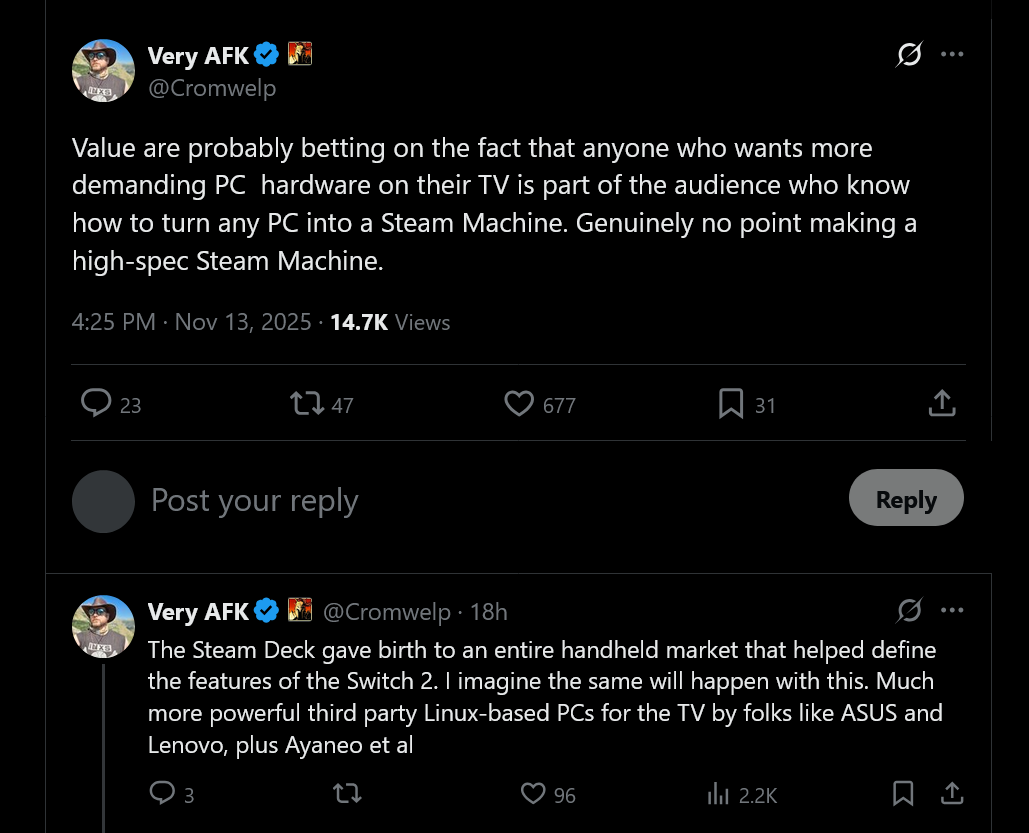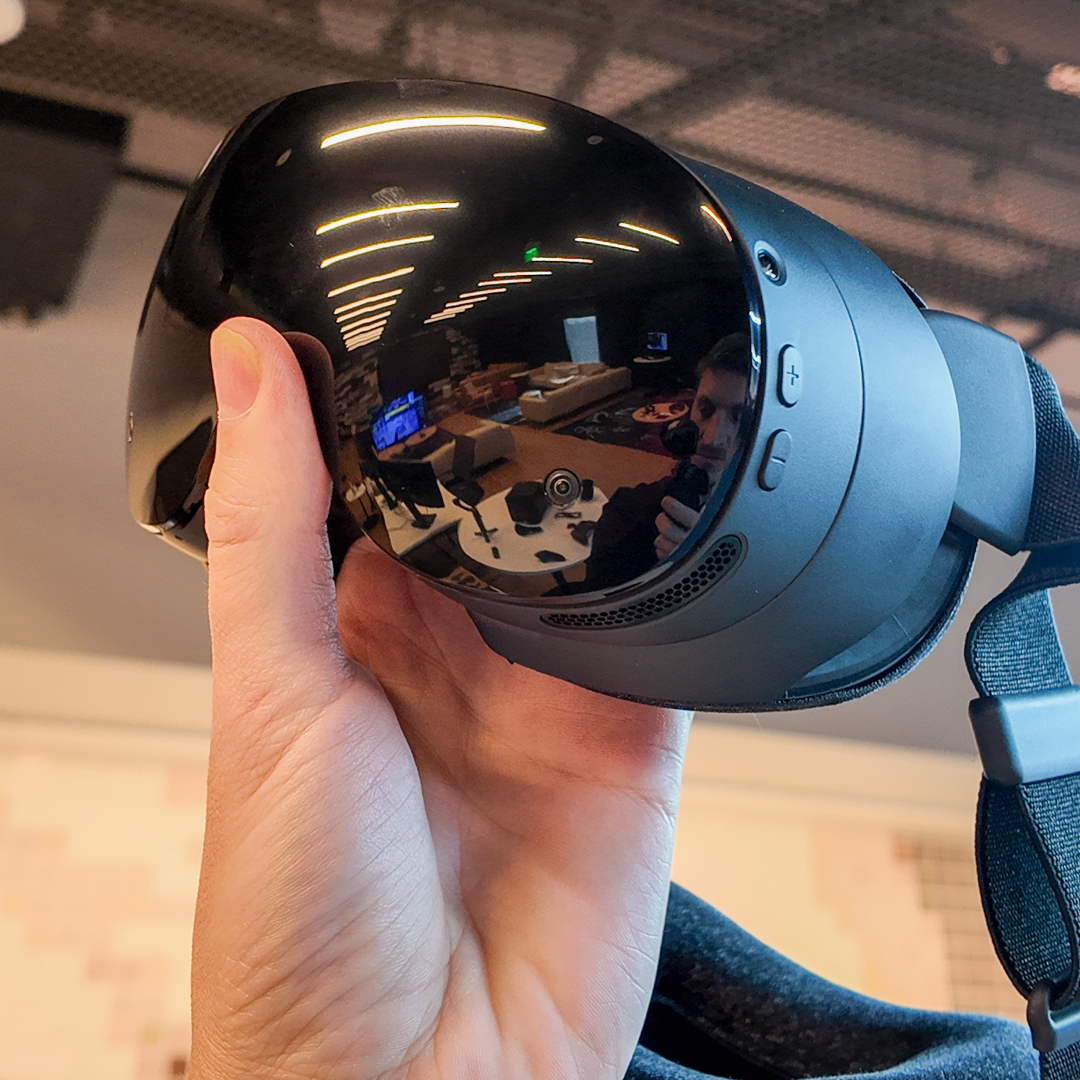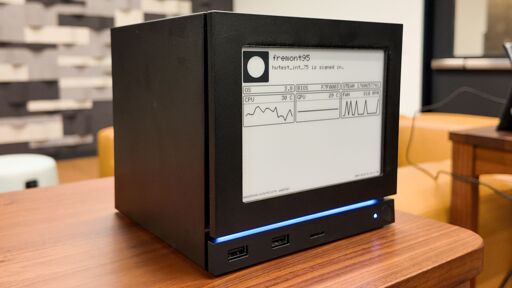Valve unveiled the new Steam Machine earlier this week, and it’s cute (if you’re into cubes, anyway). But it’s not exactly a powerhouse machine: PC Gamer hardware editor Jacob Ridley, who understands this stuff far better than I ever will, called it “fairly underpowered,” noting that it rocks just a 200 watt power supply—a fraction of the PSUs in most gaming rigs. A good friend of mine, a longtime PC gamer, asked me, “Why the hell would I ever want something like this?” My answer, simply, was, “You wouldn’t.”
But that, according to Larian director of publishing Michael Douse (and I agree wholeheartedly on this) is entirely the point. Valve isn’t coming for committed PC gamers who know what they’re doing and want the lights to dim when they fire up their tabletop fusion reactors. It’s gunning for people who want Steam games on the TV without any dicking around.
“Valve are probably betting on the fact that anyone who wants more demanding PC hardware on their TV is part of the audience who know how to turn any PC into a Steam Machine,” Douse, always quick with a well-considered opinion, wrote on X. “Genuinely no point making a high-spec Steam Machine.”
Which isn’t to say higher-end Steam Machines aren’t in store, but Douse believes that, like the Steam Deck, Valve will establish the template with the Steam Machine and let other manufacturers put out more powerful Linux-based TV boxes as they see fit.

(Image credit: Michael Douse (Twitter))
“Pre-built system market has massive opportunity in the living room but no precedent to follow (no entry point),” Douse continued. “If Valve can once again normalise and thus create that entry point there is potential for big growth in that new market, and thus potential to move fast and shake up.”
And what that has the potential to do, he continued, is shift “the war for the living room” from a battle between a few branded bits of hardware to one between digital storefronts—that is, numerous hardware manufacturers putting out a range of machines to run a handful of competing storefronts like Steam. “In that sense Valve & Xbox have the upper hand. (Support for 3rd party hardware),” Douse concluded. “Xbox strategy make sense now?”

(Image credit: Michael Douse (Twitter))
It’s an interesting thought and certainly within the realm of possibility, although obviously it’s pretty long-term thinking. But it all tracks back to the new Steam Machine, and its intentional low-spec design. Pricing will likely be the key factor here; we won’t know what’s cooking on that front for a while yet, but assuming Valve keeps it low (or at least not too damn high), the Steam Machine has the potential to be a big hit among people who just want to play some Stardew or Battlefield 6 on the couch. And that, in the long run, really could change everything.

Steam Frame: Valve’s new wireless VR headsetSteam Machine: Compact living room gaming boxSteam Controller: A controller to replace your mouseView Deal
From PCGamer latest via this RSS feed


